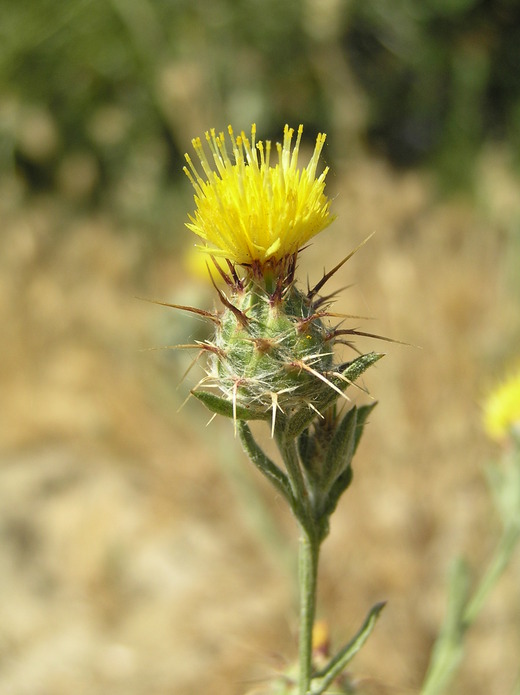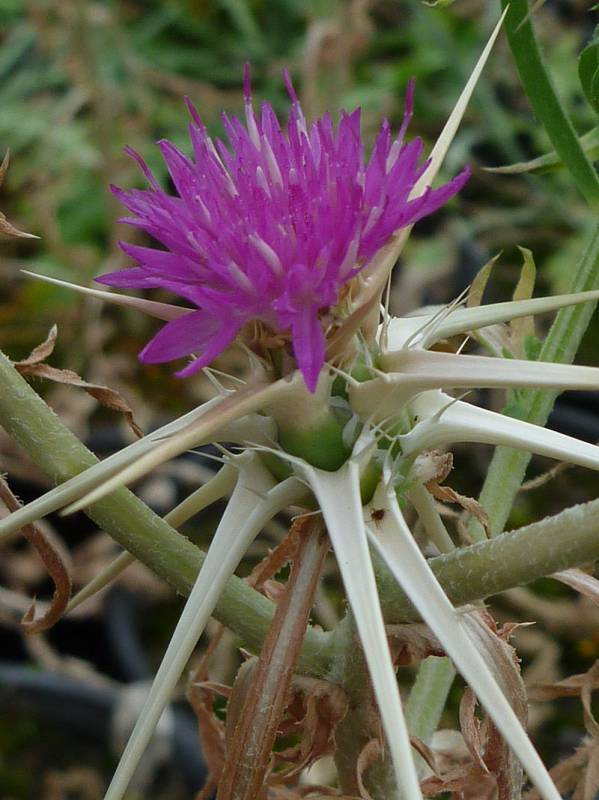Centaurea melitensis
Centaurea calcitrapa
Maltese starthistle, tocalote
purple starthistle, red starthistle
Basal and lower cauline leaves oblanceolate, toothed to lyrate-pinnatifid, 3-15 cm. long and 5-35 mm. wide, usually deciduous; middle and upper cauline leaves smaller, becoming linear-oblong and entire upward.
Heads few to numerous;
involucre 8-15 mm. high, broader toward the base, its middle and outer bracts spine-tipped, the central spine 5-9 mm. long; the inner bracts purple tinged;
flowers yellow, all alike;
pappus 1.5-3 mm. long;
receptacle strongly bristly.
Centaurea melitensis
Centaurea calcitrapa
Occurring chiefly west of the Cascades in Washington; British Columbia to California and Mexico, east to Texas and eastern North America.
Occurring east of the Cascades crest in Washington; Washington to California, east to New Mexico, also in eastern North America.
- Local floras:
BC,
CA,
OR,
WA
- Local Web sites:
CalFlora,
CalPhotos,
Flora NW,
PNW Herbaria
WildflowerSearch
iNaturalist (observations)
USDA Plants Database
- LBJ Wildflower Center
- SEINet
- Plants of the World Online
- Encyclopedia of Life
- Wikipedia
- Google Image Search
- Local floras:
BC,
CA,
OR,
WA
- Local Web sites:
CalFlora,
CalPhotos,
Flora NW,
PNW Herbaria
WildflowerSearch
iNaturalist (observations)
USDA Plants Database
- LBJ Wildflower Center
- SEINet
- Plants of the World Online
- Encyclopedia of Life
- Wikipedia
- Google Image Search



